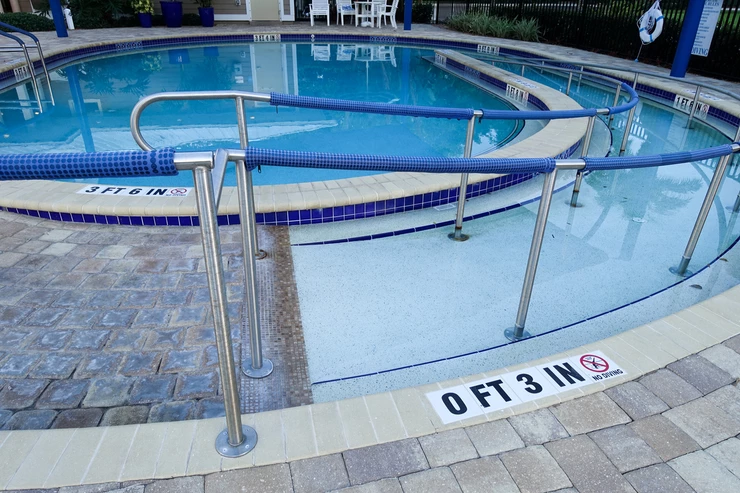Creating Truly Inclusive Swimming Spaces: The Importance of Handicap-Accessible Pools
- Admin
- Apr 8
- 2 min read

As I'm designing my first residential swimming pool of this kind and my mind is going in all directions, I'm sharing some of my racing thoughts.
Swimming is one of the most enjoyable and beneficial activities, offering relaxation, exercise, and social interaction. However, for individuals with mobility challenges, access to pools can be a significant barrier. That’s why handicap-accessible pools are essential—they provide a welcoming environment for people of all abilities, ensuring that everyone can experience the joys of the water.
Key Features of Handicap-Accessible Pools
When designing pools for accessibility, several features are critical:
Pool Lifts: These mechanical devices help individuals with disabilities transfer safely from the pool deck into the water.
Sloped Entries & Zero-Depth Entrances: Unlike traditional ladders or steps, sloped entries and beach-like access points make it easier for wheelchair users and those with mobility aids to enter the water smoothly.
Handrails & Grab Bars: Well-placed handrails offer crucial stability for those who need support navigating pool areas.
Wide Pathways & Changing Facilities: Accessibility isn't just about the pool itself—spacious locker rooms, ramps, and non-slip surfaces enhance ease of movement.
The Benefits of Accessible Pools
Handicap-accessible pools aren’t just about compliance with the Americans with Disabilities Act (ADA); they create inclusive spaces that foster independence, therapy, and community engagement. Water-based therapy has been proven to assist individuals with arthritis, spinal cord injuries, and other physical conditions. Additionally, accessible pools enable families to swim together without barriers.
How You Can Support Accessibility
Advocating for better infrastructure in public and private pools can make a huge difference. Whether you're a pool owner, a community member, or a policymaker, consider the following:
Encouraging local pool facilities to upgrade their accessibility features.
Supporting legislation that funds accessible recreational spaces.
Educating others about the importance of inclusive swimming environments.
Speaking of this I can't wait to share my photos from the Hill, later this month.
The ability to enjoy swimming should not be limited by mobility challenges. Handicap-accessible pools empower individuals to exercise, relax, and engage with their community, making the water a place of freedom rather than restriction. As accessibility continues to evolve, we must ensure that swimming remains a universal joy—open to everyone, and we will do our best to bring more people to water.
Thank you for being here :)




















Comentários